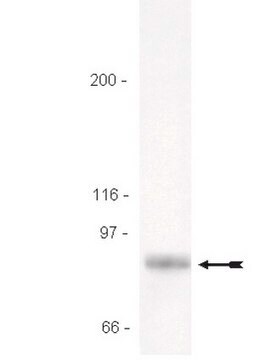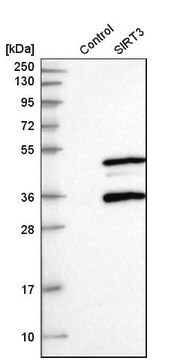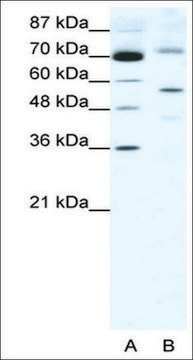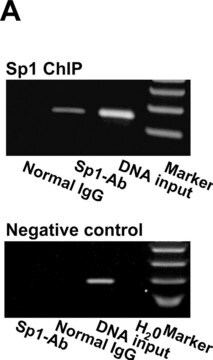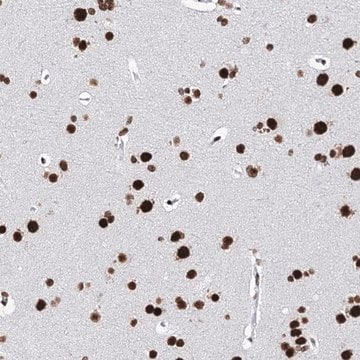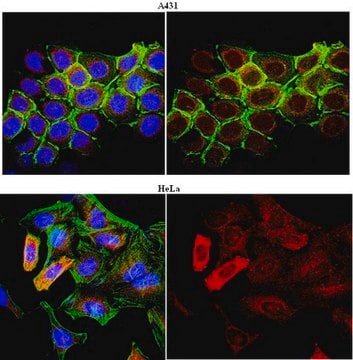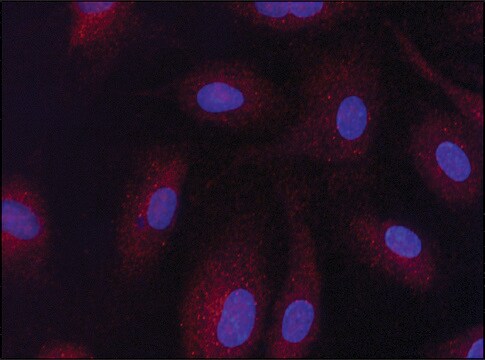07-1596
Anti-SIRT3 (CT) Antibody
from rabbit
Sinonimo/i:
SIR2-like protein 3 , mitochondrial nicotinamide adenine dinucleotide-dependent deacetylase, silent mating type information regulation 2, S.cerevisiae, homolog 3, sir2-like 3, sirtuin (silent mating type information regulation 2 homolog) 3 (S. cerevisiae
About This Item
Prodotti consigliati
Origine biologica
rabbit
Forma dell’anticorpo
purified antibody
Tipo di anticorpo
primary antibodies
Clone
polyclonal
Reattività contro le specie
human, mouse
tecniche
ELISA: suitable
immunohistochemistry: suitable
western blot: suitable
N° accesso NCBI
N° accesso UniProt
Condizioni di spedizione
wet ice
modifica post-traduzionali bersaglio
unmodified
Informazioni sul gene
human ... SIRT3(23410)
mouse ... Sirt3(64384)
Descrizione generale
Specificità
Immunogeno
Applicazioni
This antibody has been shown by an outside laboratory to be suitable for ELISA (1:1000).
Immunohistochemistry:
This antibody has been shown by an outside laboratory to be suitable for histochemistry using human hepatocarcinoma tissue (1:50 – 1:100).
Epigenetics & Nuclear Function
Histone Modifying Proteins
Qualità
1:250 dilution of this antibody detected SIRT3 on 10 µg of C2C12 lysate.
Descrizione del bersaglio
Stato fisico
Stoccaggio e stabilità
Risultati analitici
C2C12 cell lysate
Altre note
Esclusione di responsabilità
Non trovi il prodotto giusto?
Prova il nostro Motore di ricerca dei prodotti.
Codice della classe di stoccaggio
10 - Combustible liquids
Classe di pericolosità dell'acqua (WGK)
WGK 2
Punto d’infiammabilità (°F)
Not applicable
Punto d’infiammabilità (°C)
Not applicable
Certificati d'analisi (COA)
Cerca il Certificati d'analisi (COA) digitando il numero di lotto/batch corrispondente. I numeri di lotto o di batch sono stampati sull'etichetta dei prodotti dopo la parola ‘Lotto’ o ‘Batch’.
Possiedi già questo prodotto?
I documenti relativi ai prodotti acquistati recentemente sono disponibili nell’Archivio dei documenti.
Filtri attivi
Il team dei nostri ricercatori vanta grande esperienza in tutte le aree della ricerca quali Life Science, scienza dei materiali, sintesi chimica, cromatografia, discipline analitiche, ecc..
Contatta l'Assistenza Tecnica.